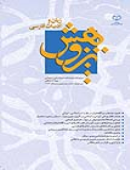سير تحول اساطير ايران بر بنياد اسطورههاي پيشدادي و كياني
محورهای موضوعی : پژوهشهای ادبیات کلاسیک ایرانمحمدتقي راشد محصل 1 , مرتضي تهامي 2
1 -
2 -
کلید واژه: ثنويت کرانمندي جهان جابهجايي اسطوره اهميت پادشاهي تأثيرپذيري اساطير,
چکیده مقاله :
اساطير ايران در قالب آفرينش دوازده هزار ساله زردشتي و يا نه هزار ساله زرواني تبيين ميشود. ويژگي اصلي اين اساطير، ثنويت و کرانمندي جهان است. سلسلههاي پيشدادي و کياني، بخشي از اين دورة آفرينش را در بر ميگيرند، پيدايش انديشه و اعتقاد به وجود ديوان و پريان از يکسو و ظهور آدمياني ستمگر و بدکار چون ضحاک و افراسياب در دوره اين دو سلسله داستاني چهره مينمايد. عظمت و شکوه ايران و اهميت پادشاهي نيز، از ويژگيهاي اين دوره اساطيري است. ارتقاء انسان (پادشاهان، پهلوانان) و قرار گرفتن به جاي ايزدان، نيز از نکات قابل توجه اسطورهها است. همچنين از تأثيرپذيري اساطير ايراني از اساطير و فرهنگهاي تمدنهاي مناطق همجوار (بينالنهرين، يونان، حوزة رودسند) نبايد غفلت ورزيد.
The Iranian myths are explained in the form of creation of Twelve Thousand Zoroastrian or Nine Thousand Zarwani. The main characteristic of these myths is the dualism and limitation of the universe. The Pishdadi Dynasty and Kiyani Dynasty cover a part of this Creation Period. The foundation of thought and belief in the existence of demons and fairies on the one hand and the appearance of tyrannical men such as Zahak and Afrasiyab on the other hand takes place in these two fictional periods. The magnificence and glory of Iran and the significance of kingdom also count as the main characteristics of this mythical period. The promotion of mankind (kings, heroes) and taking the place of gods are the other considerable features observed in these myths. Furthermore, one should not forget that the Iranian myths were affected by the myths and cultures and civilizations of neighboring regions (Mesopotamia, Greece, regional area of Indus).


